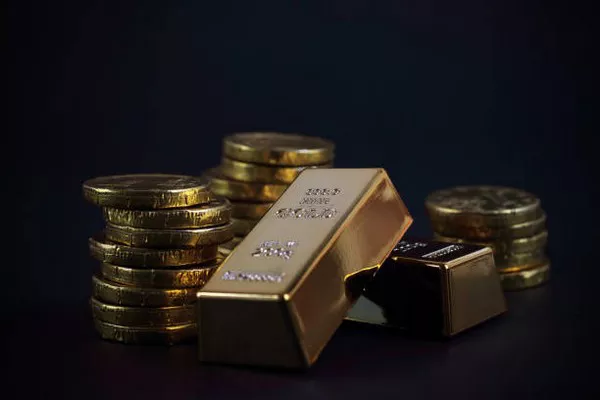Gold has long been a symbol of wealth, power, and prestige. Over the centuries, various cultures have utilized gold not only as a form of currency but also as a medium for art, jewelry, and adornment. With the rise in global gold trading and jewelry crafting, understanding the markings on gold products has become increasingly important for both consumers and investors. One common marking you may encounter is the “916” stamp. In this article, we will explore what the 916 stamp signifies, its implications in the gold industry, and how it can impact your purchasing decisions.
What Does the 916 Stamp Represent?
The “916” stamp on gold indicates its purity, specifically that the gold content is 91.6%. This purity level means that out of 1,000 parts of the material, 916 parts are pure gold. The remaining 84 parts may consist of other metals, such as copper, silver, or palladium, which are often added to enhance the metal’s durability and alter its color.
The Purity Scale
To understand the significance of the 916 stamp, it is essential to familiarize yourself with the gold purity scale, which is typically measured in karats (K). Here’s a quick breakdown:
- 24K Gold: 99.9% pure gold
- 22K Gold: 91.6% pure gold
- 18K Gold: 75% pure gold
- 14K Gold: 58.3% pure gold
- 10K Gold: 41.7% pure gold
From this scale, you can see that 916 gold is synonymous with 22K gold, often used in jewelry, coins, and various gold artifacts. Its high purity level makes it desirable for both aesthetic appeal and investment value.
Historical Context
The “916” marking has roots in ancient goldsmithing practices. Traditionally, various cultures developed their own methods for purifying and marking gold. The use of a standardized purity mark became prevalent as trade expanded and the demand for authentic gold increased. Countries like India, which are known for their intricate gold jewelry, have widely adopted the 916 stamp, reinforcing its significance in the market.
Global Recognition
The 916 stamp is recognized in many countries, particularly in Asia. In India, for example, the Bureau of Indian Standards has established regulations for gold purity and hallmarking, where 916 gold is a standard. This recognition adds a layer of trust for consumers and investors alike.
The Importance of the 916 Stamp
1. Authenticity
When you see the 916 stamp on a piece of gold jewelry, it serves as a guarantee of authenticity. This stamp assures consumers that the item contains a specific level of pure gold. In a market rife with counterfeit products, such markings help buyers make informed decisions.
2. Value
The purity of gold significantly impacts its market value. Since 916 gold contains a high percentage of pure gold, it usually commands a higher price compared to lower karat options. Understanding this can help consumers gauge the value of a piece before making a purchase. Additionally, when reselling gold, items with a 916 stamp will likely yield a better return on investment.
3. Durability
While pure gold is malleable and soft, the addition of other metals enhances its strength and durability. The 916 gold composition allows for jewelry that can withstand daily wear without compromising its beauty. This makes it an attractive choice for pieces like rings, bracelets, and necklaces that are meant to be worn frequently.
Buying 916 Gold: What to Consider
When purchasing gold with a 916 stamp, there are several factors to keep in mind:
1. Source of Purchase
Always buy gold from reputable dealers. Check for certifications or hallmarks from recognized authorities. This ensures that you are getting genuine 916 gold and not a lower purity or counterfeit product.
2. Weight and Design
Gold is priced per gram, so the weight of the item significantly affects its cost. Consider both the weight and the design when evaluating the price. Intricate designs may require higher craftsmanship costs, influencing the overall price.
3. Market Trends
Stay informed about gold market trends. Gold prices fluctuate due to various factors, including economic conditions, inflation, and geopolitical tensions. Understanding these trends can help you make more informed purchasing decisions.
4. Return Policies and Guarantees
Before making a purchase, inquire about return policies and guarantees. A reputable dealer will often provide a certification of authenticity and a return policy, allowing you peace of mind in your investment.
Care and Maintenance of 916 Gold
To maintain the beauty and integrity of your 916 gold jewelry, proper care is essential. Here are some tips:
1. Regular Cleaning
Use a soft cloth to wipe down your gold jewelry after wearing it. This helps remove oils and dirt that can accumulate over time. For deeper cleaning, soak the jewelry in a mild soap solution and gently scrub with a soft brush.
2. Avoid Harsh Chemicals
Gold can be sensitive to harsh chemicals found in household cleaners, perfumes, and lotions. To preserve the luster of your jewelry, remove it before applying such products.
3. Storage
Store your gold pieces in a dry, cool place, preferably in a fabric-lined box or pouch. Avoid storing multiple pieces together, as they can scratch each other.
See Also Gold Bullion vs Gold Coins: What’s the Difference?
Conclusion
The 916 stamp on gold is a vital marker that conveys a wealth of information about purity, authenticity, and value. Understanding its significance can help consumers make informed decisions when purchasing gold jewelry or investing in gold assets. As you navigate the world of gold, whether for adornment or investment, the 916 stamp serves as a trusted assurance of quality and craftsmanship. As always, educating yourself on market conditions and sourcing your gold responsibly will enhance your experience and satisfaction.
You Might Be Interested In
- The Risks of Buying Gold: A Comprehensive Analysis
- Gold vs Spot Gold: What’s the Difference?
- Is the U.S. Dollar Coin Made of Real Gold?


